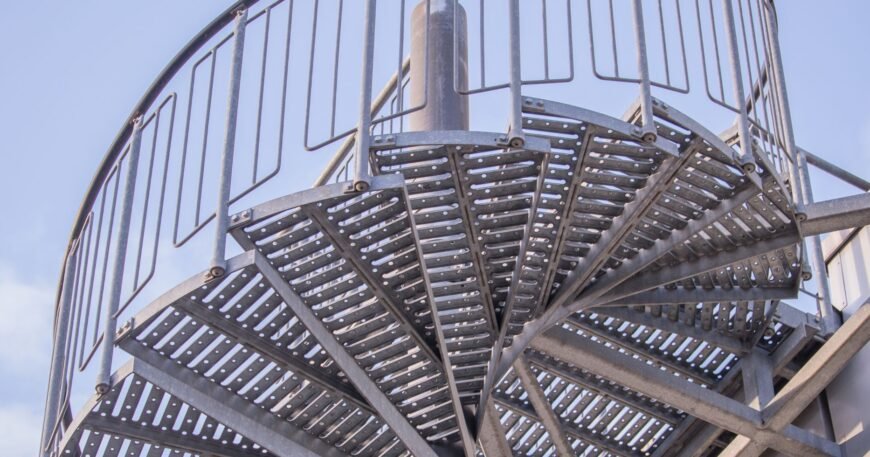On placing a spiral staircase: or why everything seems simple… until it isn’t
— honest answers from a spiral staircase manufacturer for those caught in a circular dilemma
“I don’t want to mess this up. I just want it to look good, work well, and not take a whole month to sort out.”
This sentence — or something close to it — comes up at least ten times a week. And honestly? Totally understandable. A spiral staircase is no easy decision. It’s like getting a tattoo on an old house wall: it needs to fit, because you’re not just going to swap it out later.
Many clients come to us saying they “love the shape, and the space-saving would be perfect,” but… then come the questions. The kinds of questions people often don’t dare ask, afraid they’ll sound silly. But they’re not silly. Quite the opposite.
“Will this even fit in my space?”
That’s the most common — and the most reasonable — question. Often, the site conditions don’t match the vision. The blind spot is this: a spiral staircase isn’t just about diameter. Wall thickness, ceiling height, fixing points, traffic direction, and even window and door placement all matter.
If you’re currently wondering whether it’ll squeeze into the corner of your workshop or hug the edge of your mezzanine, you’re right to hesitate. This isn’t just about design — it’s about function, too. We always evaluate based on site plans. And if needed, we visit in person — because the eye often sees more than a PDF.
“What if it ends up being uncomfortable to use?”
Spiral staircases are beautiful. But not every version is practical. If you’ve caught yourself looking at pictures online thinking, “How would I carry a paint bucket up that?”, you’re not alone. People tend to fall in love with the form, only to realize it’s too steep, too narrow, or just awkward to turn on.
The trick here isn’t compromise — it’s customization. Because yes, a spiral can be comfortable. You just need to define its purpose — worker traffic, occasional maintenance, daily use — and tailor the number of steps, rise, and tread width accordingly. We don’t just draw designs — we plan movement.
“I’m worried it won’t match the surroundings.”
Another common — and often unspoken — fear. Because a spiral staircase isn’t just an architectural element; it’s a visual focal point. It says, “Something’s happening here.” If it sticks out, feels off, or too industrial, it can ruin the aesthetic.
That’s why material choice, surface finish, and color are always individual decisions with us. We know a rugged outdoor service stair is not the same as a sleek indoor minimal spiral. Sometimes, the perfect balance lies in between — say, a steel frame with wooden treads.
“I don’t want to be misled, but I don’t understand all these technical details.”
This is one of the most important points. Spiral staircases come with a ton of technical references: DIN standards, corrosion resistance grades, structural calculations, minimum handrail heights… Many clients just nod along while internally feeling lost.
But we believe you can’t make responsible decisions about something you don’t understand. That’s why we explain every plan in plain language. Not condescendingly, but as a partner. This isn’t a contest — it’s a collaboration.
Let me share a real example.
Last summer, a small-town bakery owner reached out to us. He wanted to build a loft above his storage room, but space was tight. A spiral staircase seemed logical — but he was afraid he wouldn’t be able to carry sacks of flour up the stairs.
We modeled three possible solutions for him and virtually “carried” 25 kg up each one. A day later, he knew which version was best. Two weeks later, the staircase was installed. Today, he says: “This was the best business decision I’ve made in five years.”
A spiral staircase is more than a structure.
It’s a choice. A curve in space that connects one level to another — or your current situation to your vision. And we, as manufacturers, don’t believe in one-size-fits-all. We believe in helping you find what works, what fits, and what brings joy for years to come.
Because the best spiral staircases don’t just twist — they lift you upward.
If you feel like you’re spinning in circles between options, maybe it’s time to pause. Not to give up — but to take a fresh look at what you want, what you need, and who you want to walk this path with.
We’re here if you’re ready to begin. Starting with just one step is always enough.


